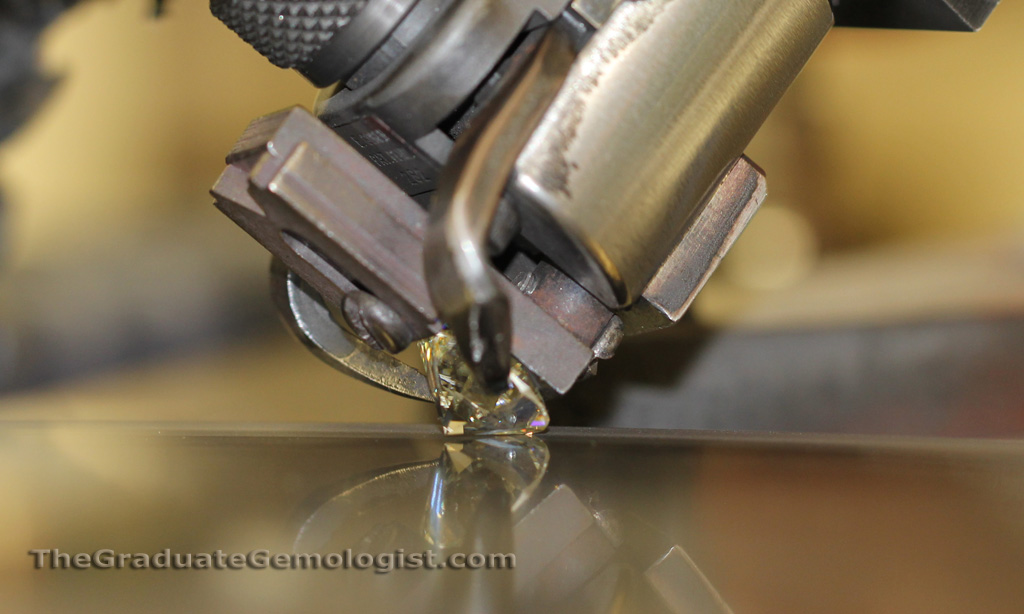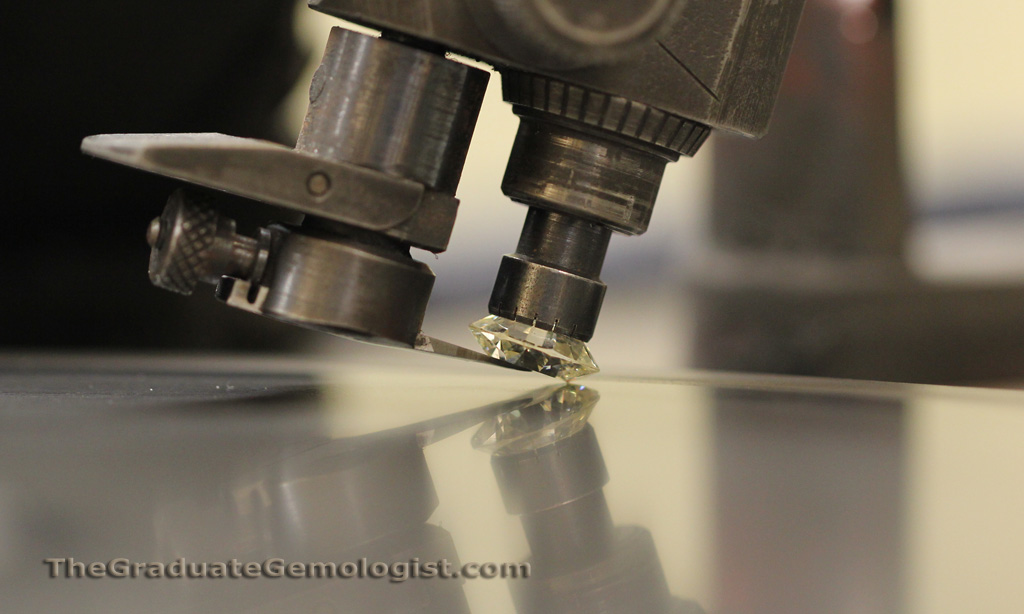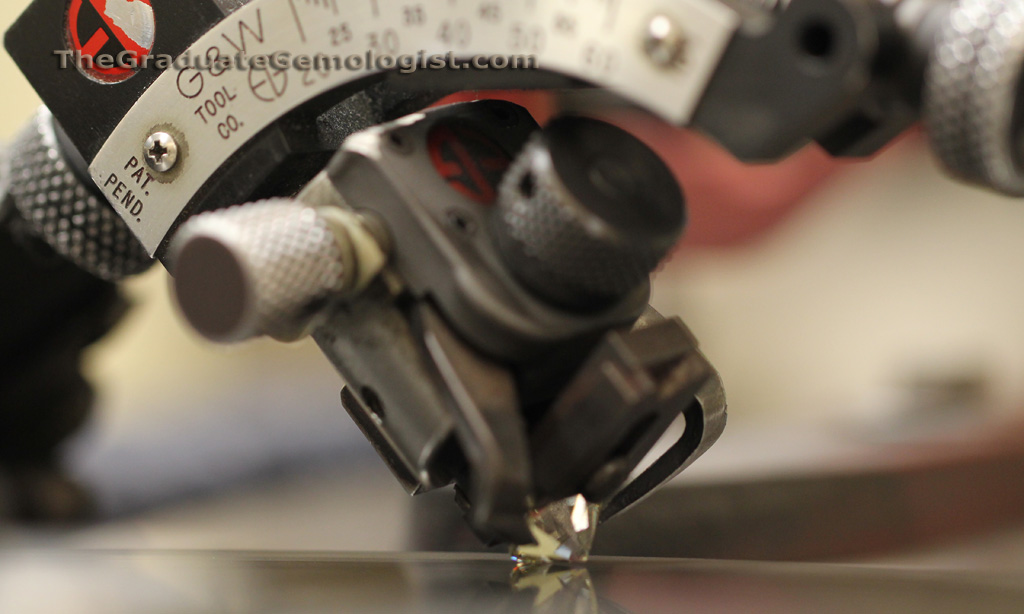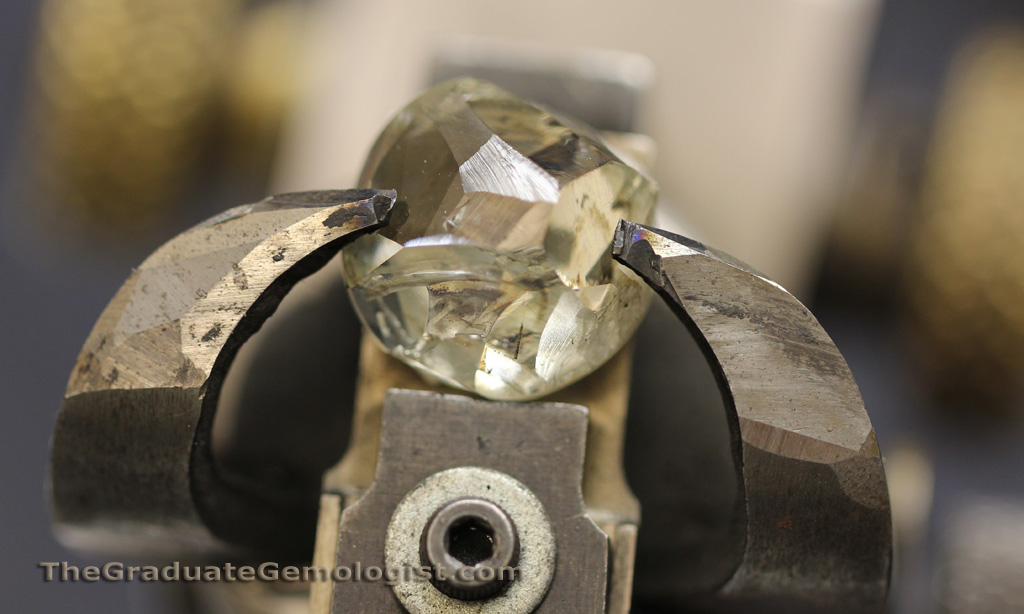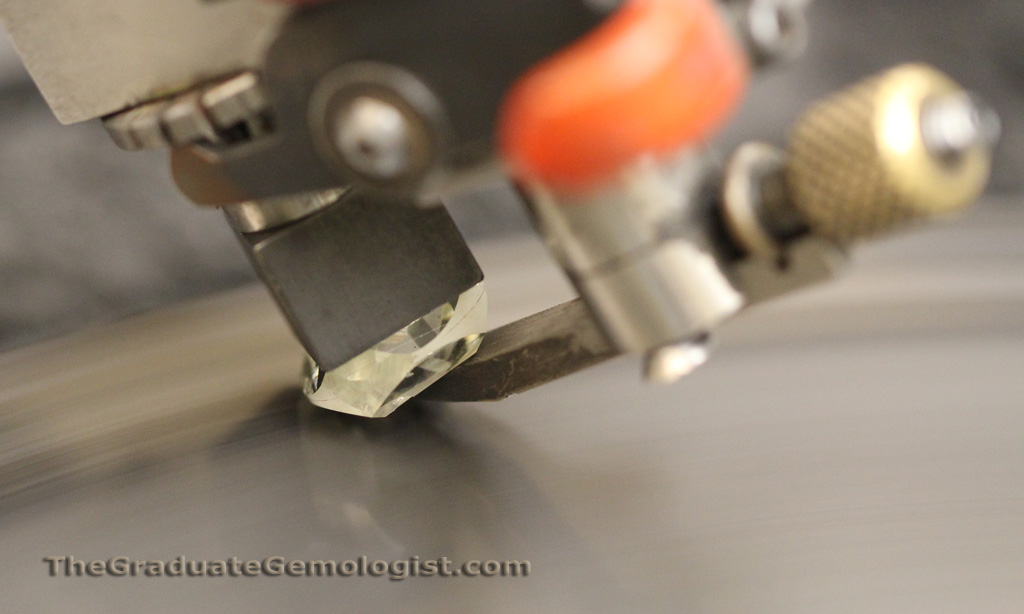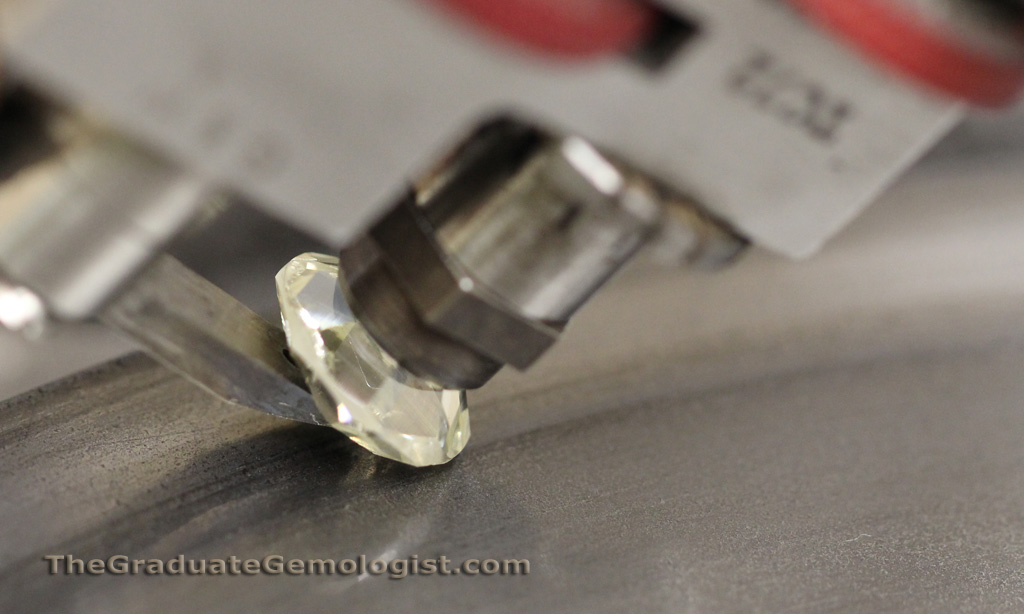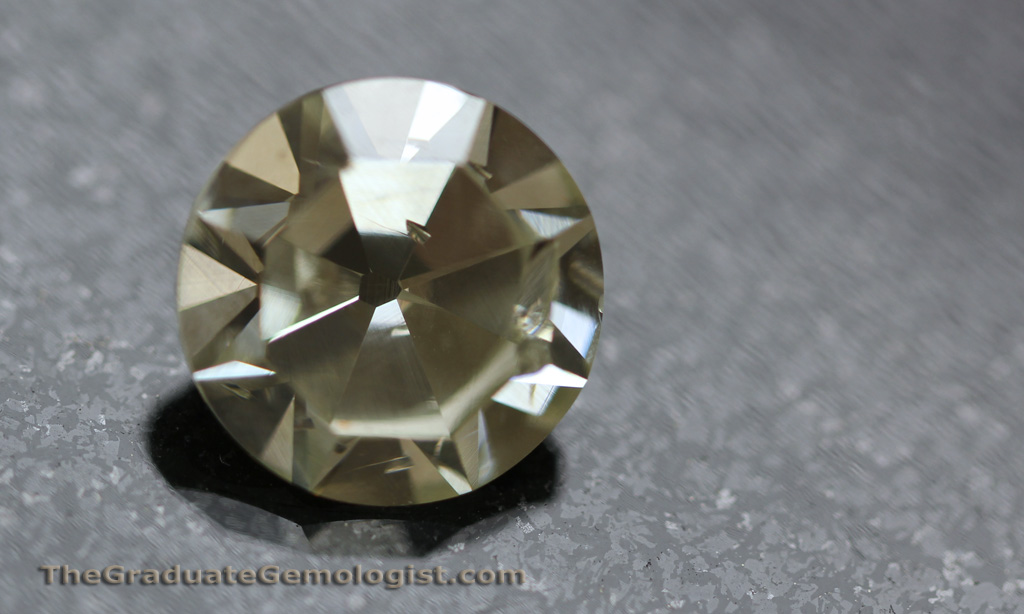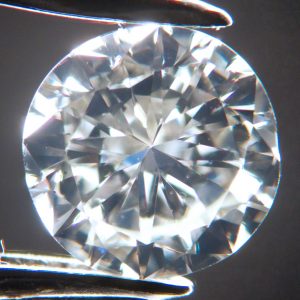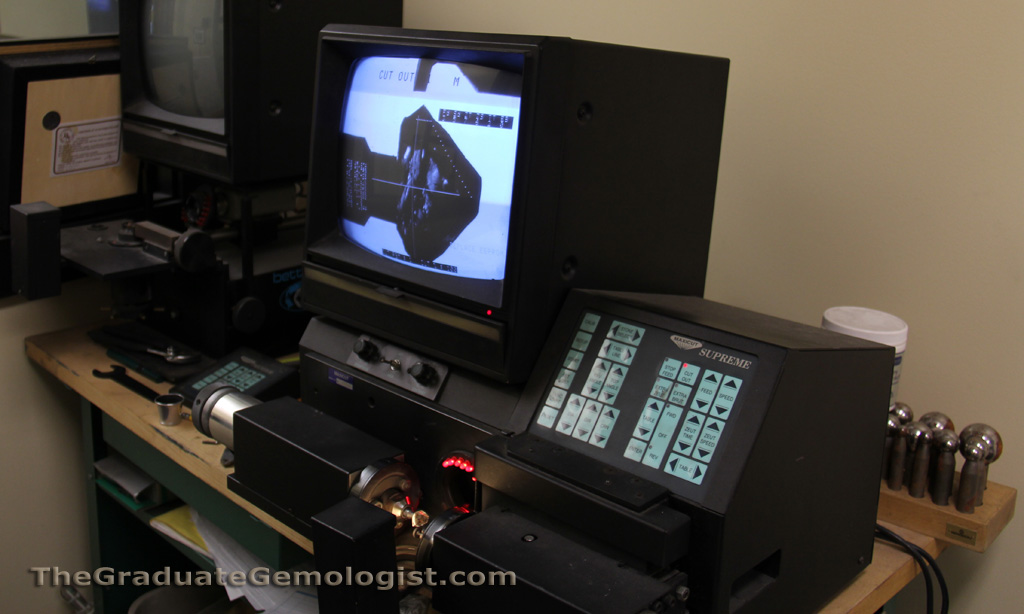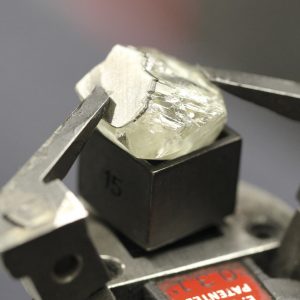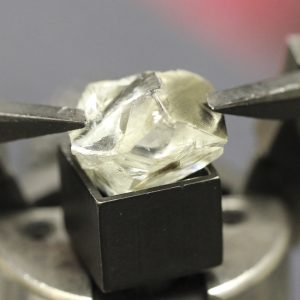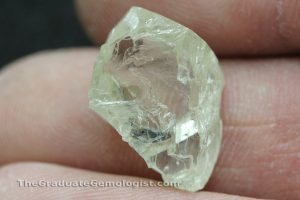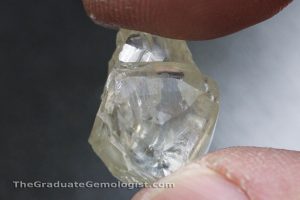Lets take a look at a diamond enhancement process called clarity enhancement (CE). The process can be applied to diamonds that have surface reaching feathers. Feathers are visible due to air being contained within the feather so they appear to be white and contract against the body of the diamond.
By adding a chemical filler the feathers can be made to less obvious, increasing the apparent clarity of a diamond. Unlike the process of laser drilling, clarity enhancement (CE) is not permanent. The filling can be removed on purpose or accidentally if exposed to high heat or strong solvents.
Most major diamond labs will not grade CE diamonds because the process is not permanent.
Here is a photo of a radiant cut diamond, it has a few surface reaching feathers including a fairly large one under the table. The diamond’s appearance should improve if we have it clarity enhanced..

Zooming forward a couple of weeks we have received the diamond back from the treatment facility.
After treatment you can see there is some reduction to the large feather under the table and reduction in appearance to a feather at about 11 o’clock position. The inclusions are not gone, they are just made a little less obvious. Overall I would say this diamond did not respond very well to the treatment, but it totally depends on the inclusions themselves how well they filler goes into the feathers.
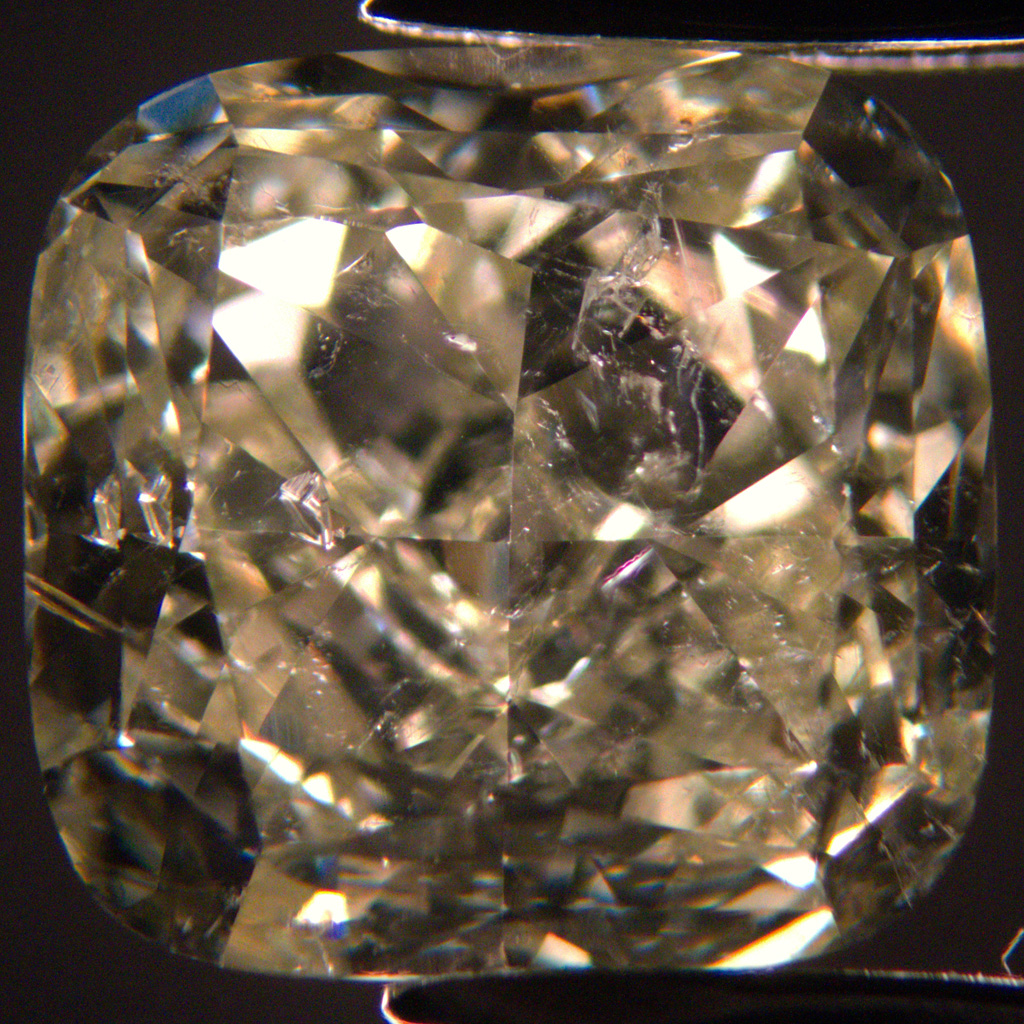
Disclosure & Detection of Clarity Enhancement
Any diamond that has been clarity enhanced must have the treatment disclosed to a potential buyer of the stone. Customers need to be made aware of what they are buying as well as being informed of how to take care of their CE diamonds.
The filler used in the diamond treatment process gives off flashes of color. When viewed under a loupe or microscope you can see flashes of color (often blue & purple) when the diamond is tilted.
